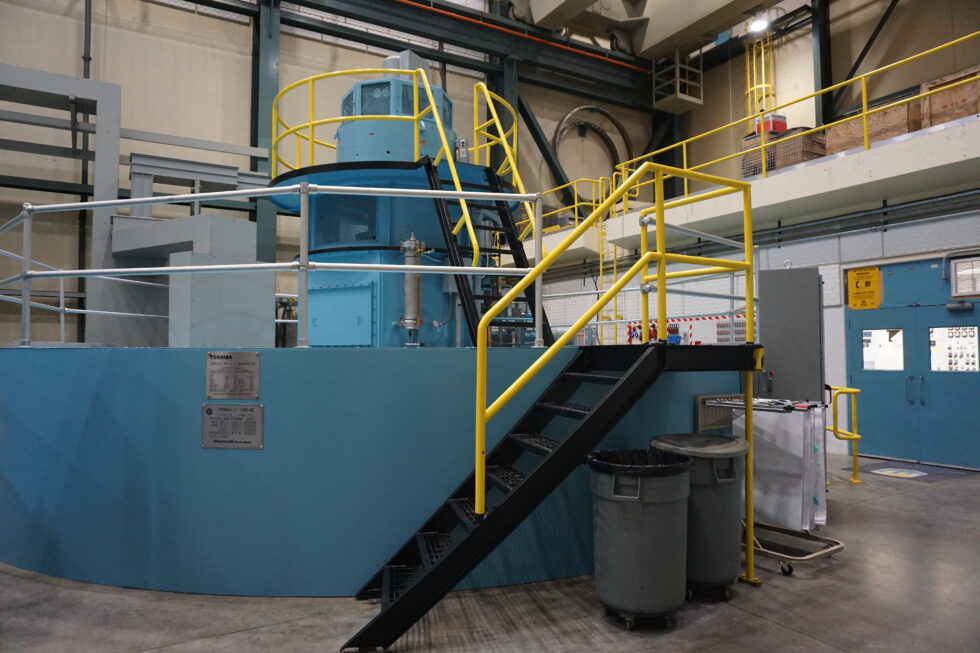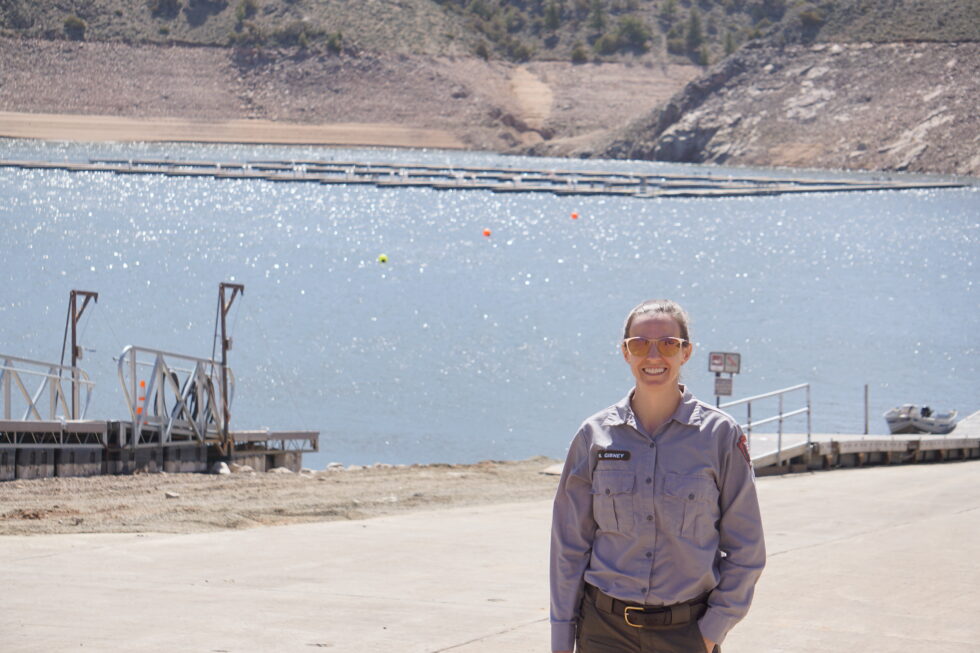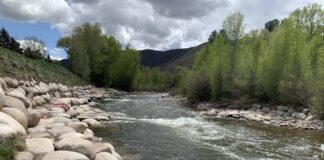
By Stephanie Maltarich
Water Desk Grantee Publication
This story was supported by the Water Desk’s grants program.
The reservoir provides recreation like boating and fishing, powers thousands of homes through hydroelectricity and stores water for Lake Powell and other downstream users. The reservoir is critically low, and it’s possible water levels may be lowered even further in 2022.
Blue Mesa Reservoir once resembled a deep and healthy lake. But a 22-year drought, coupled with obligations to release water to downstream users, has left the reservoir 69-feet below the normal high watermark. Experts say it will take a lot more than one snowy winter to refill the reservoir.
The Gunnison River flows for about 25 miles before it becomes Blue Mesa Reservoir; which stores water, creates power and provides recreation opportunities like fishing and boating.

Erik Knight, a hydrologist with the Bureau of Reclamation, says the reservoir has seen better days.
“Blue Mesa has reached some of its lowest levels on record last year with those emergency releases last year for the drought response operation,” said Knight.
The emergency releases last fall from Blue Mesa dramatically reduced its levels, but kept Lake Powell’s hydroelectric power plant generating. This spring, the reservoir sits at about one-third of what’s called “full pool”, or full capacity. And, it’s estimated that it won’t fill more than halfway by summer’s end.
Knight explains the reservoir is one piece of The Aspinall Unit. The series of dams are named after Wayne Aspinall, a Colorado congressional representative who worked on western land and water issues.
“The Aspinall Unit is comprised of three dams and reservoirs,” said Knight. “We’ve got Blue Mesa Reservoir, that’s the largest one and the furthest upstream and stores the most amount of water.”
Just downstream from Blue Mesa are the other two dams: Morrow Point and Crystal. While storing water is the main function, the reservoirs in the Aspinall Unit also contribute to the grid that supplies power for about 40 million people.
The Blue Mesa Power Plant started generating electricity in 1967. Eric Langley is the plant supervisor.
“Basically these units are ran remotely, out of Page, Arizona,” said Langley. “We’re just basically here doing the maintenance on and making sure that they’re gonna run day to day.”
In the basement of the facility, Langley explained how the facility turns water to power. First, it flows through the dam into the facility through large pressurized pipes called penstocks. Then water spins through turbines creating a magnetic field that puts power onto the grid.
“That’s in a nutshell, there’s a lot more to that, obviously,” Langley said.
The water then flows through Morrow Point and Crystal before joining the Colorado River near Grand Junction. Three similar reservoirs in Wyoming, Utah and Arizona create the entire Colorado River Storage Project.

At the opposite end of Blue Mesa, Nicky Gibney, the aquatic ecologist for Curecanti National Recreation Area and Black Canyon National Park, explained how Blue Mesa’s landscape has changed over the years.
“We call this over here ‘sometimes island’ because right now we’re standing on a peninsula,” said Gibney. “When the water is at full pool, that is actually an island over there, and it seems very far away from being an island right now.”
The park manages activities in and around the reservoir, and keeping the waters accessible to visitors is one of the park’s top priorities. But Gibney said it’s becoming more difficult with low water levels.
“I think we are struggling with how to do that because everything is just unknown right now and that’s a new territory for all of us,” said Gibney.
In mid-May, the park announced the marina would not open for the first time ever.
The Colorado River Compact is a federal agreement between seven western states that defines how water in the Colorado River Basin is divided. Obligations in the compact to release water downstream is one reason for Blue Mesa’s low levels.
But the biggest culprit is the two-decade-long drought.

Eric Kuhn is the former director of the Colorado River District. He is also the author of “Science Be Dammed”. Kuhn said when the compact was written in 1922, the river was unusually wet – and today it’s unusually dry.
“And climate change has had a big, big impact on the river,” said Kuhn. “So this equitable division that they came up with 100 years ago didn’t consider the impacts of climate change.”
Kuhn says the compact can’t just be re-written or revised. But it may be re-interpreted to reflect modern water supply challenges, like drought and climate change, which are felt at every step along the nearly 1,500-mile river.
KBUT’s Headwaters series was made possible by The Water Desk, an initiative of the Center for Environmental Journalism at the University of Colorado Boulder.
The Water Desk’s mission is to increase the volume, depth and power of journalism connected to Western water issues. We’re an initiative of the Center for Environmental Journalism at the University of Colorado Boulder. The Water Desk launched in April 2019 with support from the Walton Family Foundation. We maintain a strict editorial firewall between our funders and our journalism.





